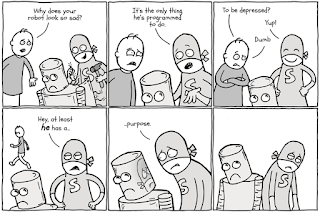Soft Images for a Hard Subject
Art's take on a difficult history
Art has always been a medium for communication, a medium of communication for things that we as human beings have a hard time communicating with one another. Politically charged ideas, tough subjects that no one dare speak of, or subjects that if spoken of directly are not welcome in normal communication. There are just some things in this world that we are not very comfortable speaking about, and art gives us a way of putting subjects out there that we would otherwise keep to ourselves.
Art Spiegelman's Maus, is one such piece of art that is supercharged with tough subjects and dare we say controversial ideas, that are difficult to talk about. The Holocaust is a regrettable period in global history that is for many a very difficult subject to discuss. Spiegelman writes about it, as many have done, but in the context of a comic. Maus uses animals to express various nationalities, such as the German cats, Jewish mice and Polish pigs. They each have their own symbolism, like the very obvious ca-hunt-mice, but also deeper ones like the fact that the Jews are mice to signify their treatment as a pest or vermin. Besides their literary significance however, the fact that the book is a comic, and the characters are portrayed as animals automatically makes the books for a much wider target audience. People of all ages can be interested in such a story and learn about the holocaust without having to sit through a painful history book (especially us visual learners). The fact that it is told as a biography within a biography also makes it more interesting, relatable and serves as a mood refresher so that the entire book is not about the tragedies of the holocaust.
All these qualities make Maus a very interesting, fun and greatly educational read for almost all if not all demographics.
On a personal note, Maus made me think about the painful history of my home country Peru. Peru has a history of internal turmoil between the government a small internal terrorist guerrilla groups. These groups target government officials almost randomly to express their discontent with the government. My family had a very close encounter with one of these terrorist attacks because my grandmother's brother was major of our valley years ago. He was killed by a guerrilla group along with his young son in their home. I have heard the story of how this happened dozens of times ever since I was little and could tune into adult conversations. As a child I remember imaging the story unfolding much like the images in Maus where the bad guys and the good guys were not flesh and blood humans but figments of my childish imagination, aliens, monsters, and animals. As I grew older and came to understand the depth of the story and the implications of it these images turned into realistic graphic portrayals of what had actually happened. Maus does both, by portraying the characters of the Holocaust as animals, yet making the images express the horrors that did happen and are very real to many.
Maus expresses its ideas in a flawless and elegant manner that manages to make the reader see and feel the events without imposing a graphic narrative or visuals making it a true work of art.


















































